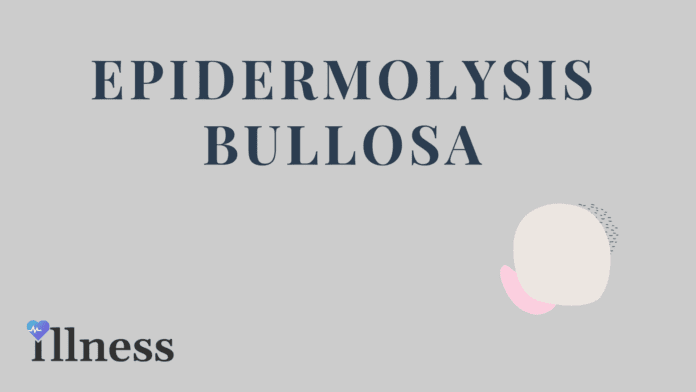Overview Of Epidermolysis Bullosa
Epidermolysis bullosa (EB) is a group of disorders in which skin blisters form after a minor injury. It is passed down in families.
Commonly Associated With
Causes Of Epidermolysis Bullosa
There are four main types of EB. They are:
- Dystrophic epidermolysis bullosa
- Epidermolysis bullosa simplex
- Hemidesmosomal epidermolysis bullosa
- Junctional epidermolysis bullosa
- Another rare type of EB is called epidermolysis bullosa acquisita. This form develops after birth. It is an autoimmune disorder, which means the body attacks itself.
EB can vary from minor to fatal. The minor form causes blistering of the skin. The fatal form affects other organs. Most types of this condition start at birth or soon after. It can be hard to identify the exact type of EB a person has, although specific genetic markers are now available for most.
Family history is a risk factor. The risk is higher if a parent has this condition.
Symptoms Of Epidermolysis Bullosa
Depending on the form of EB, symptoms can include:
- Alopecia (hair loss)
- Blisters around the eyes and nose
- Blisters in or around the mouth and throat, causing feeding problems or swallowing difficulty
- Blisters on the skin as a result of minor injury or temperature change, especially of the feet
- Blistering that is present at birth
- Dental problems such as tooth decay
- Hoarse cry, cough, or other breathing problems
- Tiny white bumps on previously injured skin
- Nail loss or deformed nails
Exams & Tests
Your health care provider will look at your skin to diagnose EB.
Tests that are used to confirm the diagnosis include:
- Genetic testing
- Skin biopsy
- Special tests of skin samples under a microscope
- Skin tests may be used to identify the form of EB.
Other tests that may be done include:
- Blood test for anemia
- Culture to check for bacterial infection if wounds are healing poorly
- Upper endoscopy or an upper GI series if symptoms include swallowing problems
- Growth rate will be checked often for a baby who has or may have EB.
Treatment Of Epidermolysis Bullosa
The goal of treatment is to prevent blisters from forming and avoiding complications. Other treatments will depend on how bad the condition is.
HOME CARE
Follow these guidelines at home:
- Take good care of your skin to prevent infections.
- Follow your provider’s advice if blistered areas become crusted or raw. You might need regular whirlpool therapy and to apply antibiotic ointments to wound-like areas. Your provider will let you know if you need a bandage or dressing, and if so, what type to use.
- You may need to use oral steroid medicines for short periods of time if you have swallowing problems. You may also need to take medicine if you get a candida (yeast) infection in the mouth or throat.
- Take good care of your oral health and get regular dental check-ups. It is best to see a dentist who has experience treating people with EB.
- Eat a healthy diet. When you have a lot of skin injury, you may need extra calories and protein to help your skin heal. Choose soft foods and avoid nuts, chips, and other crunchy foods if you have sores in your mouth. A nutritionist can help you with your diet.
- Do exercises a physical therapist shows you to help keep your joints and muscles mobile.
SURGERY
Surgery to treat this condition may include:
- Skin grafting in places where sores are deep
- Dilation (widening) of the esophagus if there is a narrowing
- Repair of hand deformities
- Removal of any squamous cell carcinoma (a type of skin cancer) that develops
OTHER TREATMENTS
Other treatments for this condition may include:
- Medicines that suppress the immune system may be used for the autoimmune form of this condition.
- Protein and gene therapy and the use of the drug interferon are being studied.



